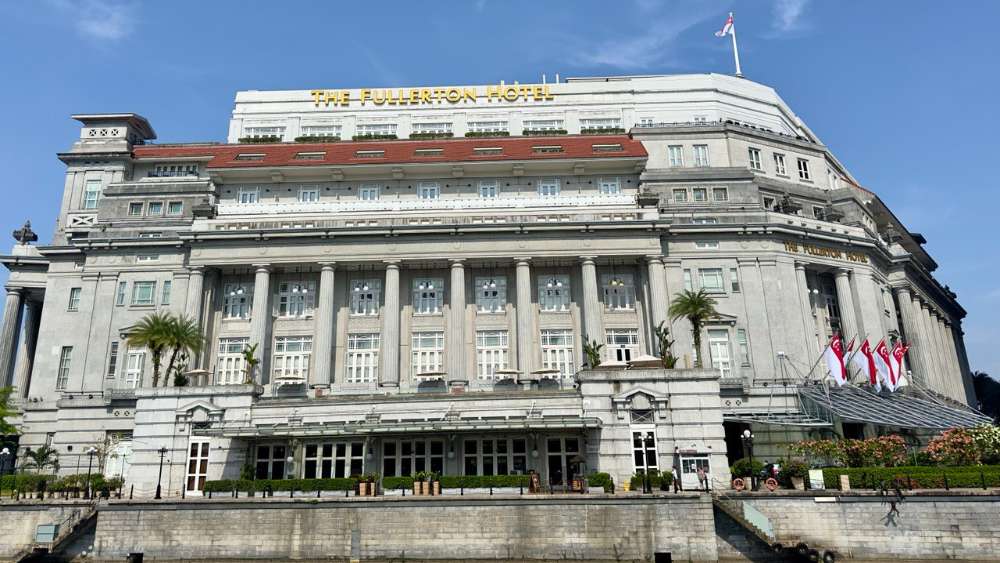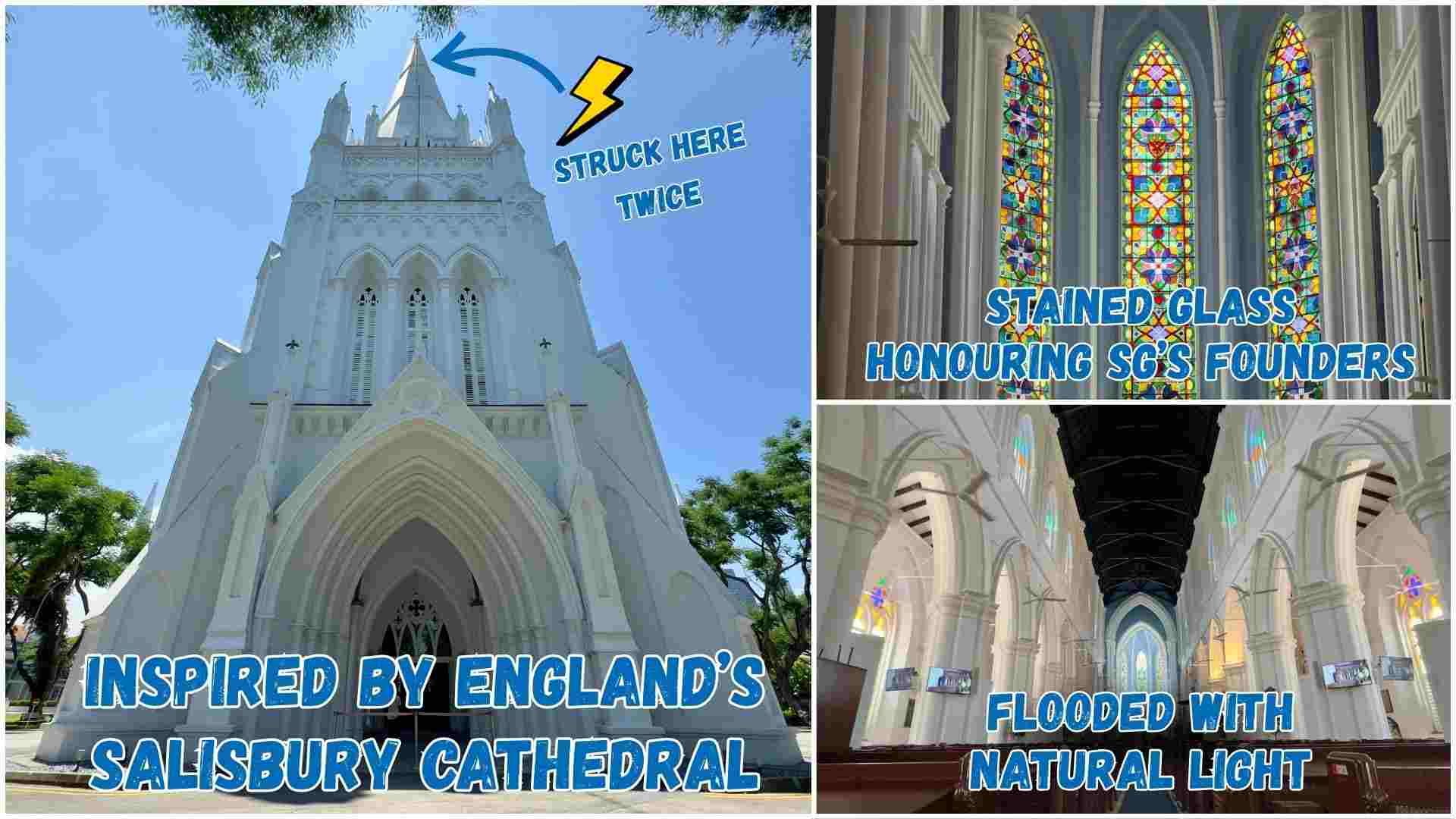National Monuments Of Singapore: Former Fullerton Building
What is a National Monument? Who gazettes them? How many national monuments are there in Singapore? To date, the Preservation of Sites and Monuments, a division of National Heritage Board, has identified and gazetted 75 buildings, structures and sites of national significance as an integral part of Singapore’s built heritage.
And we're here to tell you all about them - one National Monument at a time!
You've probably passed by or stepped into more than a few of them without realising they were National Monuments: Al-Abrar Mosque, Asian Civilisations Museum, the Civilian War Memorial, Saint Andrew's Cathedral, the Esplanade Park Memorials, Fort Siloso on Sentosa - no need to plan an itinerary for friends visiting from overseas; just show them this article ✌️
In this edition, we focus our attention on a historied building that was once a fort and home to many government offices, and is now a five-star luxury hotel – the former Fullerton Building.
📍 Location
The former Fullerton Building was the 71st building to be gazetted as a National Monument, and is located near other National Monuments such as Yueh Hai Ching Temple, the Singapore River Bridges (Elgin Bridge, Cavenagh Bridge, Anderson Bridge), and the Asian Civilisations Museum. The MRT stations nearest to it are Raffles Place, Clarke Quay, and City Hall.
📅 Significant dates
Dates built:
- 1825: Fort Fullerton was built
- Feb 1924-Jun 1928: The former Fullerton Building was constructed
- 1997-2000: The former Fullerton Building was converted into a hotel
Milestones:
- 1865: Fort Fullerton was demolished
- 27 Jun 1928: The Former Fullerton Building was officially opened
- 1959-1990s: The building housed many government offices
- 1 Jan 2001: Fullerton Hotel was declared open
Date gazetted: 7 Dec 2015
📜 History
Early postal services in colonial Singapore
In the early colonial days of Singapore, postal services were initially managed by the captains of commercial sailing ships, who were typically tasked with carrying mail. By 1823, this duty was transferred to a Master Attendant, who was appointed to maintain a register of ships in the port as well as the cargo passing through Singapore.
The inaugural "post office" was a shared space, located within the Master Attendant's Marine Office, and was also utilised by the clerk to the Registrar of Import and Export.
As Singapore’s trade industry flourished, the volume of mail grew substantially. Consequently, the post office relocated to its own building near the Town Hall (another National Monument, and now Victoria Theatre) in 1854, and became an independent department from the Marine Office by 1858. In the 1870s, it moved again, this time across the river to the site of the former Fort Fullerton.
Growth of Singapore and relocation of post office
This new location on the commercial side of the river was highly advantageous for the merchants who frequently utilised the mail services. In 1874, a new building was erected for the post office. It was subsequently replaced by an even newer structure in 1885 to accommodate the rapid growth in postal services during that decade.
Fort Fullerton
Fort Fullerton, completed in 1825, was strategically positioned at the mouth of the Singapore River to safeguard the harbour, river, and trade. It was named in honour of Sir Robert Fullerton, the first Governor of the Straits Settlements (1826-1830).
Despite its fortifications, the mercantile community was apprehensive that the fort's proximity would expose their riverside warehouses to potential attacks. Addressing these concerns, the colonial authorities chose to demolish Fort Fullerton in 1865, during a period when Singapore was planning new fortifications.
Plans for a new post office building
As the 20th century approached, plans for a new post office building were initiated before the outbreak of the First World War (1914-1918). Major Percy Keys, a government architect from the Public Works Department, was appointed to lead this project in May 1920, with the help of Frank Dowdeswell. The old building was demolished in 1922, and the post office was temporarily relocated to Collyer Quay. Construction of the new building commenced in February 1924.
The Fullerton Building
On 27 Jun 1928, Sir Hugh Clifford, Governor of the Straits Settlements (1927-1929), officially opened the new building, naming it "Fullerton Building" to honour both the site's history as a fort and Sir Robert Fullerton.
Through its anchor tenant the General Post Office (GPO), the Fullerton Building played a crucial role in Singapore's global communications, as mail was the primary method of long-distance communication at the time.
The post office was designed to minimise the time required for sorting and dispatching mail, allowing it to efficiently handle the large volumes of mail and customers, particularly during peak periods such as Christmas.
There was even a tunnel running under Fullerton Road that connected the GPO to the pier, facilitating the swift transfer of mail between the post office and ships. This tunnel ceased operations after the Second World War.
Changes during WWII
During the Second World War, Singapore endured heavy bombardment by the Japanese forces. In Feb 1942, Sir Shenton Thomas, Governor of the Straits Settlements (1934-1946), and his wife sought refuge in the Singapore Club as the Government House had become unsafe. In the final days before Singapore's surrender, the Fullerton Building was repurposed as a hospital, with makeshift operating rooms for injured British soldiers.
The British surrendered on 15 Feb 1942 after Lieutenant-General Arthur Percival, General-Officer-Commanding Malaya, had informed the Governor of the decision at the Singapore Club.
The Japanese quickly took control of many government buildings, with the military administration occupying the Fullerton Building and the civilian administration operating from the former Municipal Building. After the war, the government offices and the Singapore Club resumed operations in the Fullerton Building. The GPO continued to operate from the building until the 1990s.
Post-war developments
After Singapore achieved self-government status in 1959, the Fullerton Building became the home to several key government departments that were instrumental in the nation's development. Various government departments, such as the Ministry of Finance, the Inland Revenue Department (now the Inland Revenue Authority of Singapore), and the Economic Development Board, were once housed in this building.
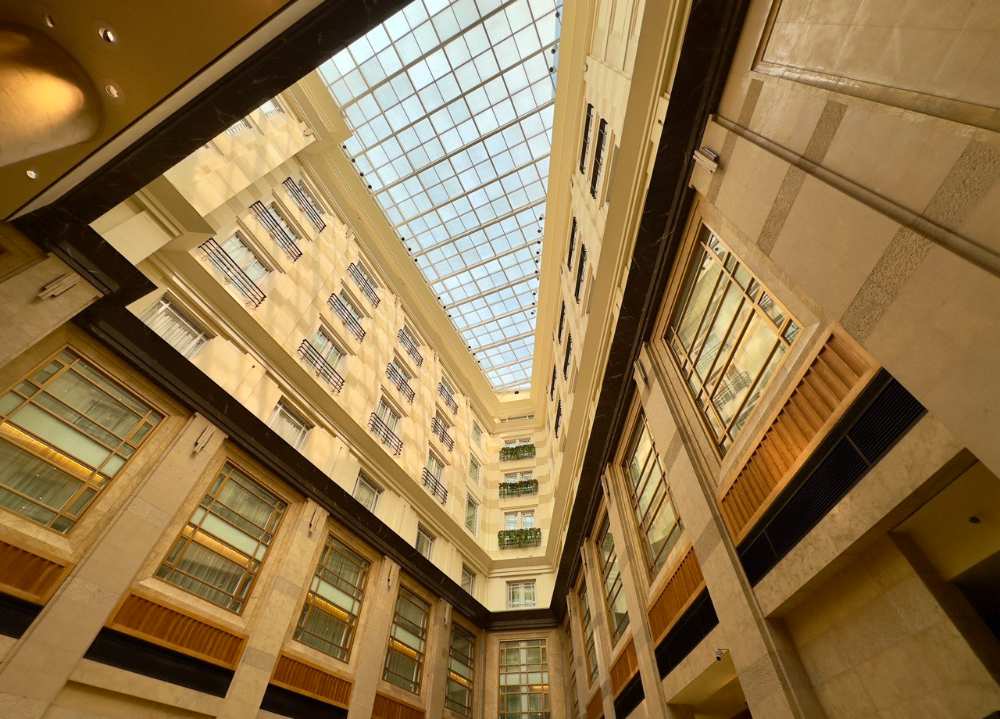 IMAGE: NG KAI
IMAGE: NG KAI
It was also in this building that several notable pioneer leaders began their careers:
- Former Deputy Prime Minister Dr Goh Keng Swee started his journey as the Minister of Finance in 1959
- Former President S. R. Nathan worked as a Seaman’s Welfare Officer in the Ministry of Labour and later in the Labour Research Unit during the 1950s and 1960s
- Former Prime Minister Goh Chok Tong served in the Economic Planning Unit in the 1960s.
Political rallies and the transformation into a hotel
From the 1950s to the 1980s, the Fullerton Building also became a significant venue for political rallies held at Fullerton Square. Many of these rallies, which often drew huge crowds, were delivered by Singapore’s founding Prime Minister, Lee Kuan Yew.
In 1996, the government declared plans to convert the Fullerton Building into a hotel. The process took place between 1997 and 2000, and the building was declared open as The Fullerton Hotel on 1 Jan 2001 at midnight by then-Prime Minister Goh Chok Tong.
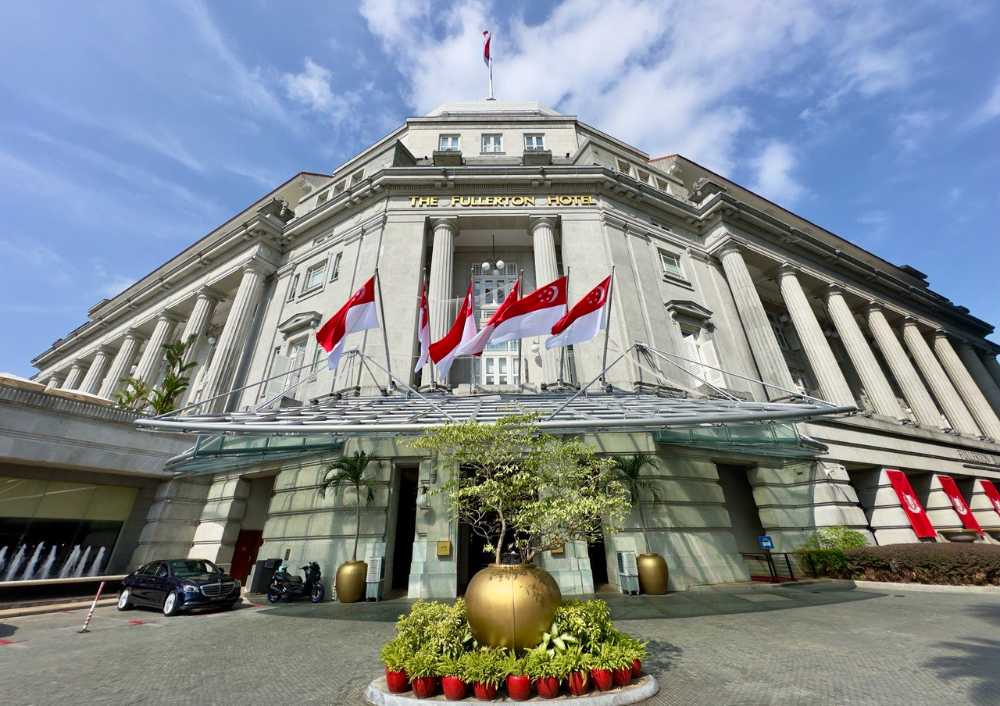 IMAGE: NG KAI
IMAGE: NG KAI
📐 Design and architecture
The former Fullerton Building's Neoclassical facade and prominent location underscored Singapore's significance as the main postal hub in British Malaya (present-day Malaysia and Singapore) at the time.
Constructed from reinforced concrete, the building originally featured five frontages with an impressive two-storey Doric colonnade (a row of evenly spaced columns supporting a roof), creating a striking visual effect.
At the entrance facing Fullerton Road, two bronze tablets commemorate the start of construction under Sir Laurence N. Guillemard and its completion under Sir Hugh Clifford.
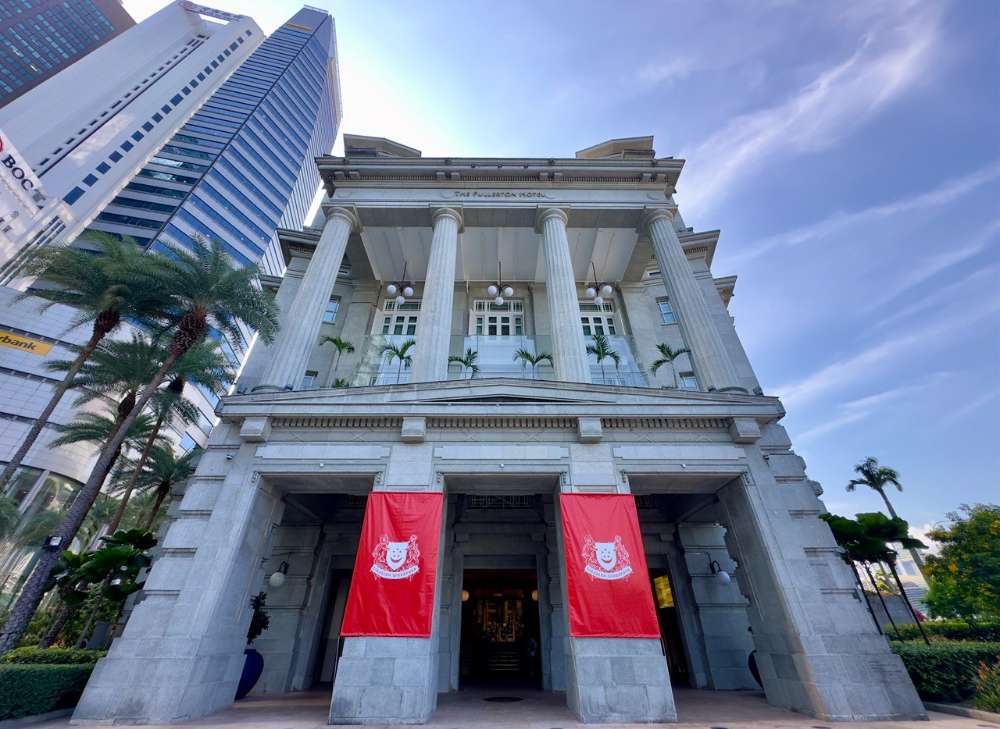 IMAGE: NG KAI
IMAGE: NG KAI
The building is embellished with intricate classical decorations crafted by Swiss sculptor Rudolf Wening and Italian sculptor Cavaliere Rudolfo Nolli. The latter also created the sculptural works for the former Supreme Court and the College of Medicine Building, while Wening designed the moulds for the sculptures at the Cenotaph.
The former Fullerton Building was designed to serve multiple purposes, accommodating the GPO, the Singapore Club, the Chamber of Commerce, the Marine Office, and various government departments. The GPO was situated in the basement and on the first floor, where it housed sorting rooms, postal halls, and offices.
The upper floors were dedicated to the Singapore Club’s facilities, including a dining room, lounge, billiard room, and sleeping quarters.
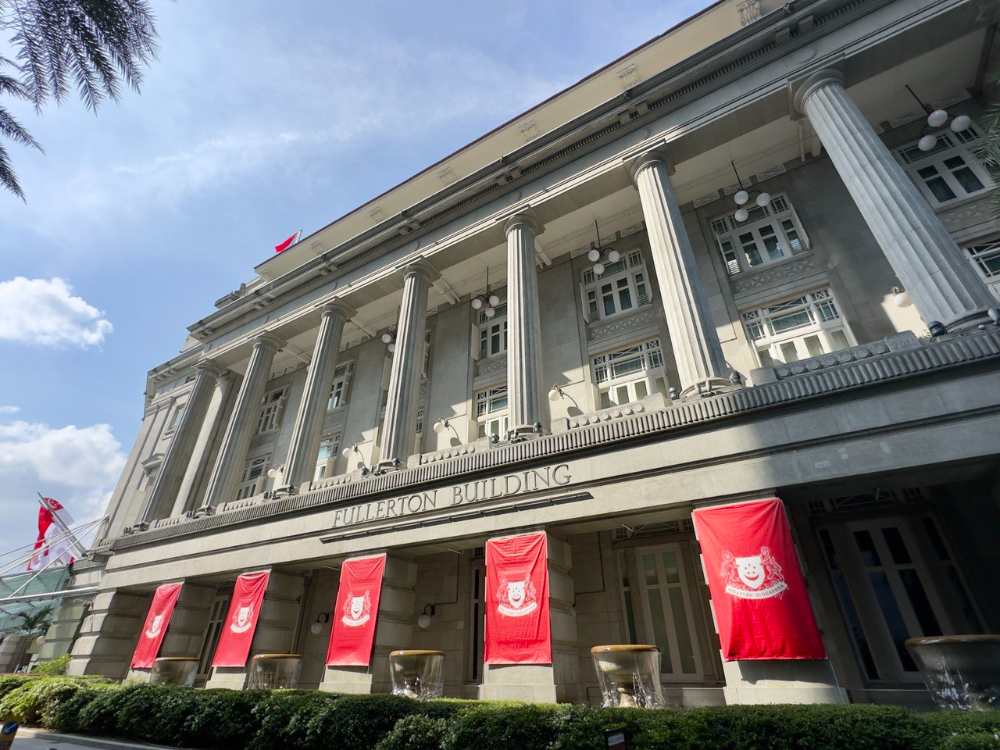 IMAGE: NG KAI
IMAGE: NG KAI
Upon its completion, the building featured state-of-the-art amenities, including 14 lifts and automated mail-sorting equipment for the post office. The high-ceilinged postal hall and courtyards provided an airy and spacious interior.
Notable elements of the building included a 300ft-long postal counter that extended from the main entrance of the post office to the side facing Fullerton Road, and the vaulted coffered ceiling of the Singapore Club on the fourth floor.
🕖 Opening hours
Fullerton Hotel is open 24/7. Find out more here.
🎟️ Admission
Entry is free.
For the latest updates on Wonderwall.sg, be sure to follow us on TikTok, Telegram, Instagram, and Facebook. If you have a story idea for us, email us at [email protected].







